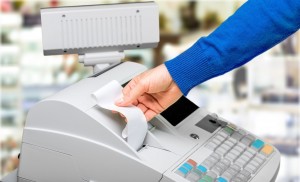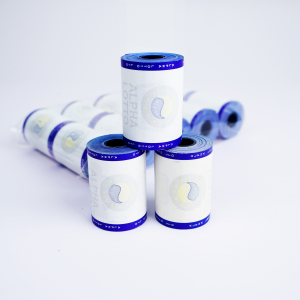Point-of-sale (POS) paper is an important supply for businesses that use POS systems to process transactions. Whether you run a retail store, restaurant, or any other type of business that relies on POS technology, it’s important to store POS paper correctly to maintain its quality and functionality. Proper storage not only ensures that your POS paper remains in good condition, it also helps prevent printing issues and equipment downtime. In this article, we’ll discuss best practices for storing POS paper to keep it in optimal condition.
1. Store in a cool, dry place
One of the most important factors in storing POS paper is maintaining suitable environmental conditions. It is crucial to store POS paper in a cool, dry place to protect it from humidity, temperature fluctuations and other environmental factors. Exposure to excessive moisture or heat can cause the paper to become damp, deformed, or discolored, causing printing problems and device jams. Ideal storage locations include a clean, dry pantry, cupboard, or cupboard that is protected from direct sunlight or extreme temperatures.
2. Prevent dust and debris from entering
Another important consideration when storing POS paper is protecting it from dust and debris. Dust and dirt that accumulates on paper can affect the performance of your POS device, resulting in poor print quality and possible damage to the printer. To prevent this from happening, store the paper in an airtight container or plastic bag to keep it clean and free of contaminants. Also, consider using a dust cover for your POS printer to minimize the risk of dust particles entering the paper path and causing problems.
3. Store away from chemicals and solvents
Avoid storing POS paper in areas where it may come into contact with chemicals, solvents, or other substances that may damage the paper. These substances can cause the paper to become discolored, brittle, or deteriorate, resulting in poor print quality and potential damage to the printing device. Keep paper away from areas where cleaning products, solvents, or other potentially harmful substances are stored or used to minimize the risk of contamination.
4. Rotate inventory regularly
To ensure that your POS paper remains in good condition, it is important to have proper inventory rotation. POS paper has a shelf life, and old paper may become brittle, discolored, or prone to jamming. By rotating your inventory regularly and using the oldest papers first, you minimize the risk of using paper that deteriorates over time. This practice also helps ensure you always have fresh, high-quality POS paper when you need it.
5. Consider the type of POS paper
Different types of POS paper may have specific storage requirements based on their composition and coating. For example, thermal paper, commonly used for receipts, is sensitive to heat and light and should be stored in a cool, dark place to prevent its coating from fading or discoloring. On the other hand, coated paper typically used in kitchen printers may have different storage considerations. Be sure to check the manufacturer’s recommendations for the specific POS paper type you are using and follow their best storage practice guidelines.
In summary, proper storage of POS paper is critical to maintaining its quality and ensuring the smooth operation of your POS equipment. You can help maintain the integrity of your paper and minimize paper damage by storing it in a cool, dry place, protecting it from dust and debris, avoiding exposure to chemicals, rotating inventory regularly, and considering the specific requirements of different types of POS paper. . Risk of printing problems. By following these best practices, you can ensure that your POS paper is always in top condition and ready for use when you need it.
Post time: Jan-29-2024



